What Is A Flywheel In Indoor Cycling Bike?

Have you ever wondered how cyclists train so they can go so fast?
How do they keep their speed up even when going uphill or on a flat road?
Flywheel might be the answer.
A flywheel is a large wheel that helps generate momentum and provide resistance on an indoor exercise bike.
But how does it work?
In this article, we’ll explore the differences between heavy and lightweight flywheels, as well as their benefits for cyclists’ training regimens.
What Is A Flywheel On A Stationary Bike And What Does It Do?
A flywheel on a stationary bike is an important part of the cycling experience.
It consists of a weighted disc that sits either at the front or back and it’s connected to the bike pedals, typically through a chain or belt.
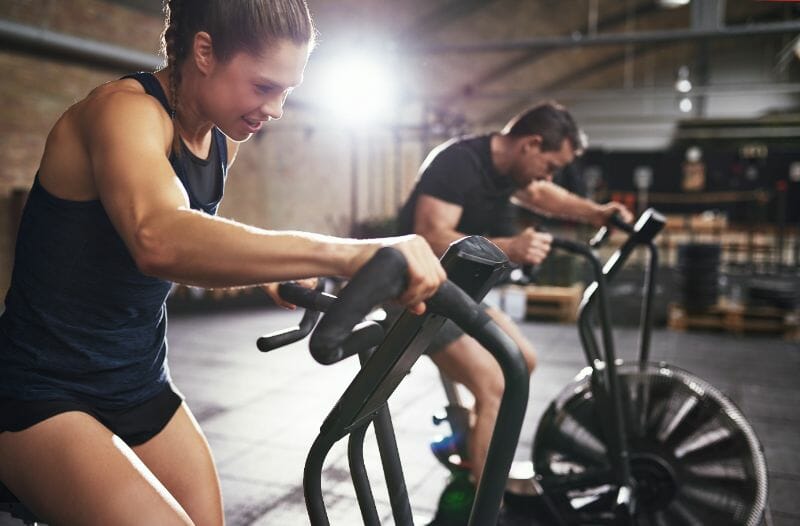
The flywheel stores the rotational energy generated during exercise, essentially providing momentum and resistance throughout each ride.
As you increase or decrease the resistance, the flywheel will spin faster or slower depending on how much effort you’re putting in.
This allows you to simulate various terrains and conditions while safely exercising indoors.
Heavy VS Lightweight Flywheel
Riding an indoor exercise bike is similar in many ways to riding a regular bicycle.
The flywheel of the exercise bike creates momentum for the rider, just as pedaling does for a regular bicycle.
The heavier the flywheel on an exercise bike, the more momentum it will generate, and this makes for a smoother ride experience.
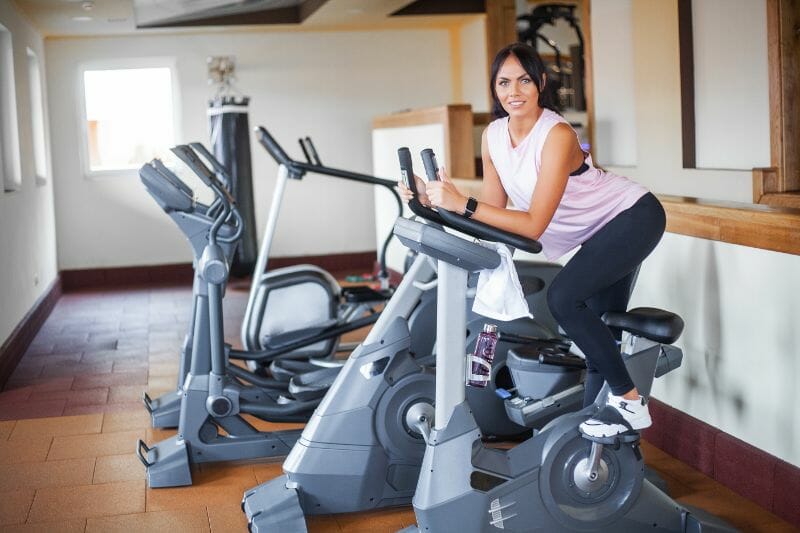
Weight matters when it comes to the flywheel because it affects your performance.
A heavier flywheel generates more momentum and allows you to maintain a faster cadence with less effort, making for a more enjoyable workout overall.
On the other hand, a lighter flywheel will be easier to start up but won’t generate as much momentum, so maintaining speed may require more energy output.
Heavy Flywheels
The use of heavy flywheels in exercise bikes is a popular choice for those looking to replicate the realistic feel of riding outside.
A heavier flywheel takes more energy to get going but, once spinning, it wants to keep moving for longer.
This simulates the experience of riding a bike outdoors and helps users push themselves from a cold start, just as they would out on the open road.
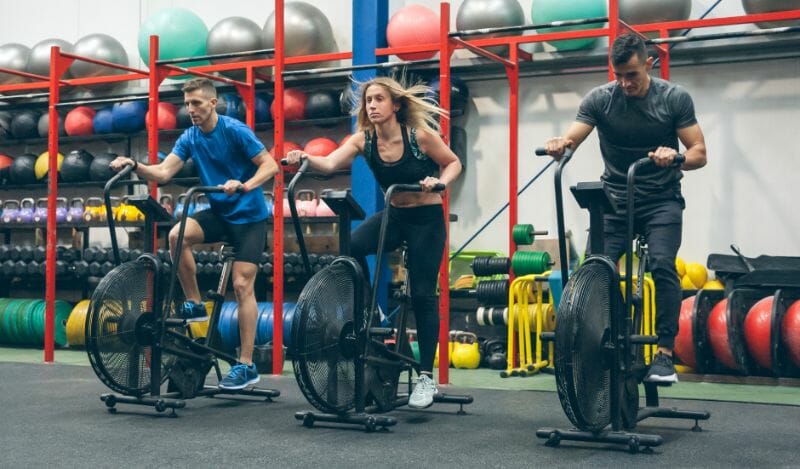
When riding an outdoor bike, you typically have to exert more effort at first before it gets easier and so does a heavy flywheel – you need to put in more energy initially for it to reach its top speed.
This makes exercising with the bike much more enjoyable and mimics reality closer than many other exercise machines.
By replicating this realistic resistance while cycling, a heavy flywheel helps improve muscle strength and endurance, helping cyclists achieve their goals faster and more comfortably.
This is how professional cyclists train safely during the winter to maintain and improve their performance.
Light Flywheels
Light flywheels are increasingly being used in the production of spin bikes, as they provide heightened levels of momentum which creates a smooth and steady pedaling action.
Keiser’s M3i is the most famous example of this technology at work, but other vendors such as Sunny are also trying to capitalize on the success of Keiser’s model by introducing their light flywheels.
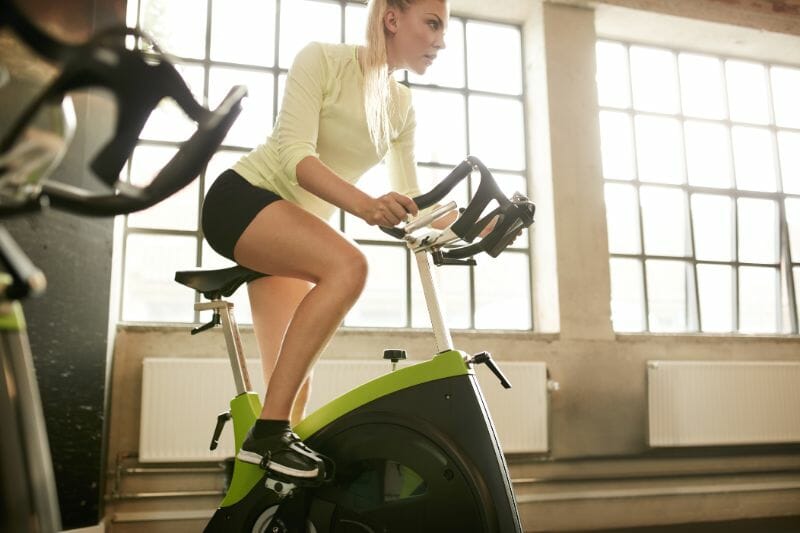
The key to producing such successful machines is having a high gear ratio that can create enough force and speed so that the flywheel can build its momentum efficiently.
This requires a much higher rotation per full pedal stroke than that of regular stationary bicycles.
For instance, Keiser’s M3i has a flywheel speed 11 times faster for each full revolution.
Such a fast-paced spin is what contributes to the idea that even using lighter-weighted flywheels, can still make for an effective and smooth spinning experience.
Which One Is Better? Heavy Or Lightweight Flywheel?
For those looking for a smoother ride while doing their cardio exercises, heavier flywheels are usually recommended.
This is because they have more mass and inertia, which in turn generates more power and smoother movement.
On the other hand, lighter flywheels are great for people who want faster acceleration and don’t mind some extra effort while pedaling up to speed.
An exercise bike with a heavy flywheel might seem like a smarter choice for the avid cyclist, but this is not always true.
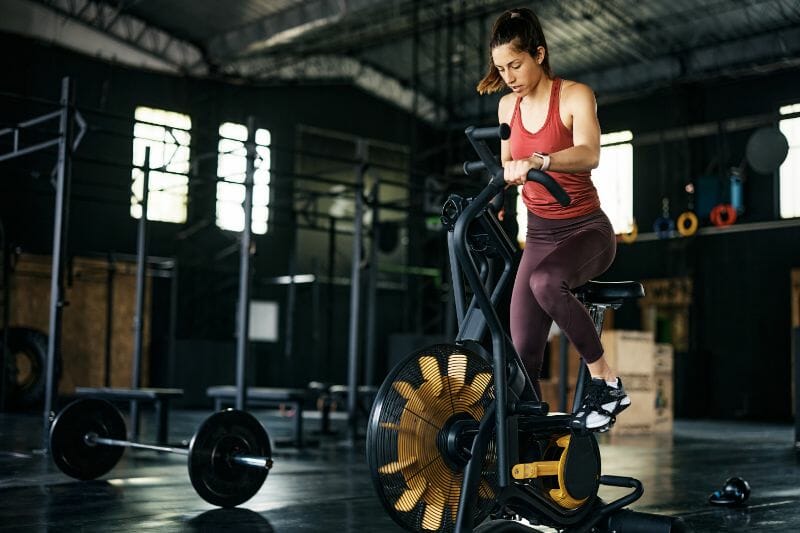
While a heavier flywheel will usually provide a more consistent, smoother ride than one with a lighter flywheel, it also makes it more difficult to accelerate if you’re looking for an intense workout.
I recommend 30-40 lb flywheels for those who want a heavier flywheel.
If you go for a lightweight flywheel, it is essential to research the product thoroughly before investing though.
Some lightweight options only provide this option to reduce the cost of the product (by reducing the material) and can ultimately result in poor riding experiences.
The SF-B1709 Magnetic Indoor Cycling Bike meets both standards – boasting a lightweight and magnetic tension resistance system – allowing riders to reach high speeds virtually noiselessly or build endurance steadily at lower levels of effort.
Will A Light Or Heavy Flywheel Burn More Calories?
The type of resistance on your flywheel will impact how many calories you can burn while biking.
While heavier flywheels require more energy to get moving, that experience has little to do with how many calories you can burn over the period you are pedaling.
Your calorie burn will depend largely on the resistance force against the flywheel and maintaining a set speed.
One type of resistance is contact-based, where felt or leather-based brakes provide friction between the wheel and pads to slow it down.
This sort of resistance requires consistently more force from you to keep it in motion at the same speed — thus increasing your calorie burn as result.
On the other hand, magnetic resistance has become popular for its accurate adjustability and low noise output level — though this type may not be as challenging for dieters looking for heavy-resistance biking experiences.
Consider looking into other specs like types of flywheel resistance before making a decision!
Is An 8kg Flywheel Good Enough?
When it comes to choosing the right flywheel for your exercise bike or indoor bike, you may be wondering if an 8kg flywheel is enough.
The answer depends on what type of workout you plan on doing and how much resistance you need from the machine.
For starters, for beginners getting into indoor cycling, a lighter flywheel can be an ideal weight as it makes pedaling feel easier when first starting but it also means that you won’t get as intense a workout as with a heavier flywheel.
It will also usually be less expensive than a heavier one.
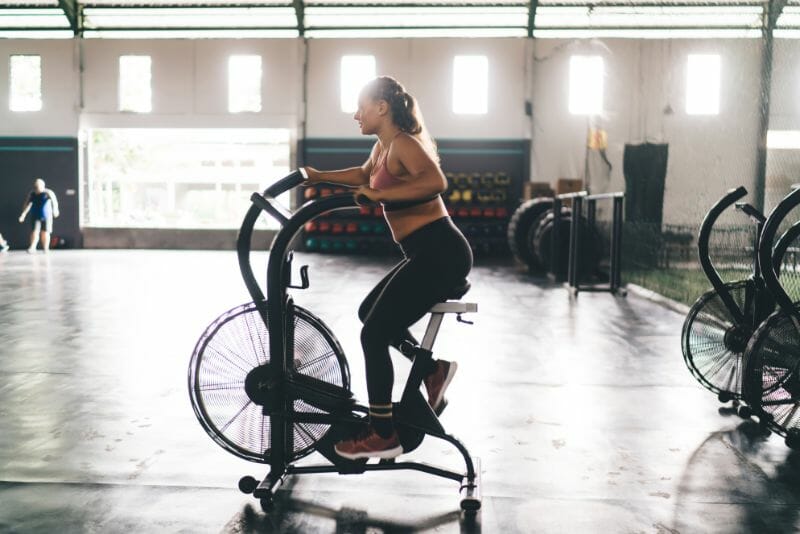
However, if you are looking for a gentler ride then something like an 8kg flywheel may be all you need.
If you are an experienced rider or are looking for a more authentic ride-feel experience, then you may want to go with something heavier.
The average flywheel weight for an indoor bike is 15kg.
This will give you a smoother and more realistic riding experience at faster speeds than the 8kg may provide.
It ultimately comes down to personal preference combined with your current skill level in cycling.
If you’re just starting then the lighter weight could be just right for developing your technique and finding your comfort zone indoors on a stationary bike with this type of exercise.
However, those who already have some confidence in mastering the pedal strokes should opt for something on the heftier side that adds torque and feels whose movement matches outdoor cycling experiences more closely.
Can You Generate Electricity From An Indoor Bike’s Flywheel?
It is possible to generate electricity from an indoor bike’s flywheel.
Unfortunately, the amount of power generated by this method is usually too small to be worth the effort.
You would have to pedal hard for a long time to generate even a small amount of electricity.
And even if you were successful, you would probably ruin your indoor bike in the process.
So why bother?
The prize isn’t worth the effort.
Final Thoughts
Professional cyclists often opt for indoor bike training during the winter or extreme weather, so they don’t have to worry about safety.
Thanks to the flywheel, they can simulate the outdoor reality and adjust the resistance according to their training program.
If you’re looking to train at home, make sure to do proper research regarding the indoor bike flywheel weight and resistance type.





